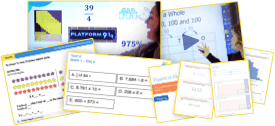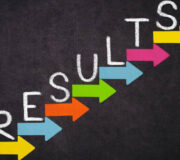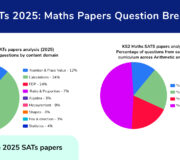250+ SATs Questions Free To Download [With Answers]
Here are hundreds of free SATs questions for you to use in the run up to the KS2 Maths SATs in May. Because we never want to just give you a list of links, we start with some useful background on the type and format of SATs questions to expect, some tips for using them and strategies for answering them.
If you just want the free download, you’ll find it here: Free resource pack of 100 arithmetic and 100 reasoning questions
This article looks at why SATs questions are a useful tool for teachers in the run up to the KS2 SATs tests, the types of questions in all three papers and how to best prepare children for these. You’ll also find links to a range of free resources for you to use to support children in their SATs preparation.
SATS 2026: STAY UP TO DATE
Join our email list to stay up to date with the latest news and free resources for SATs 2026. As usual our expert teachers will be on hand to provide one to one tuition support, revision resources, expert paper analysis, SATs teacher survey results and the SATs results 2026.
200 arithmetic and reasoning questions for Year 6
Download 100 free arithmetic questions and 100 free reasoning questions for Year 6. Includes answers and mark scheme.
Download Free Now!Benefits of practice SATs questions
SATs style questions can offer many benefits as part of your SATs preparation:
- Reinforces content: Practising SATs style questions and past SATS papers helps to reinforce the national curriculum concepts for pupils.They also gives pupils the opportunity to apply their knowledge across different question-types.
- Builds familiarity: Many SATs questions follow a specific format. If pupils are familiar with these formats it helps improve their confidence in their ability to access the tests.
- Identifies learning gaps: Practice questions enables teachers and learners to identify areas of weakness that may require extra support or a SATs intervention.
- Progress tracking: Completing SATs questions and free SATs papers provides a benchmark of where learners are and helps track progress. This is useful formative assessment to understand how children are progressing and where to adapt teaching.
- Builds confidence: Children often feel nervous as SATs approach. Practise helps to build confidence in maths and reassure pupils that the tests aren’t as intimidating as they initially thought.
- Reduces test anxiety: Practising SATs questions regularly builds familiarity and confidence. In turn, this reduces maths anxiety and test anxiety.
- Develops exam strategies: Exposure to SATs style questions builds test taking and SATs strategies learners can rely on in the actual test.
- Time management: SATs practice questions and free SATs papers help learners manage their time according to the number of marks each question is worth and number of questions in each paper.
Guided practice and support is at the heart of Third Space Learning’s primary AI maths tutoring. Pupils on the SATs revision programme can work through hundreds of SATs-style questions step by step with Skye, the AI maths tutor, through conversation-based interaction to build confidence.
Regular exposure to the types of questions pupils will be expected to tackle in May is one of the key ways to ensure children are prepared for their SATs tests.
Try the maths lessons for yourself in this free downloadable SATs intervention pack.

Format and structure of the maths SATs test
The maths SATS consist of three papers:
- Paper 1: Arithmetic (30 minutes)
This paper is designed to assess learners understanding of mathematical concepts through fixed response, fluency style questions.
- Paper 2: Reasoning (40 minutes)
- Paper 3: Reasoning (40 minutes)
These 2 papers evaluate children’s reasoning and problem solving. Questions on these papers vary in style, with some involving more complex problem solving scenarios.
KS2 SATs paper 1 predominantly contains 1 mark questions, with minimal need to show workings. The two reasoning papers contain 2 mark and 3 mark questions. Children can gain marks from showing methodology out or explaining reasoning.
Children must have exposure to these questions to ensure they know how to answer, in order to achieve the highest possible score.
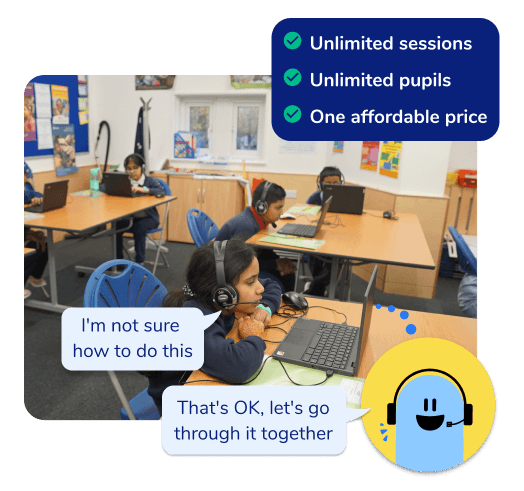
Unlimited primary maths tutoring with Skye, the voice-based AI maths tutor.
Built on the same principles, pedagogy and curriculum as our traditional tutoring, but with more flexibility, reach and lower cost.
Join the schools already helping hundreds of primary pupils nationwide with Skye’s one to one maths tutoring.
Watch Skye in actionExamples of SATs maths questions
As part of their SATS practice, children need to build confidence in solving multi step word problems. They must practise multi-step problems to ensure they understand how to show their workings and complete each step.
SATs maths question example 1

Paper 2, qu.17 (2023)
Some questions have a much higher level of cognitive demand than you would expect from the number of points awarded. Ensure children see this question-type in advance to decide whether they should leave it until the end.
Children must understand that spending a long time on one question can potentially impact on their final score if they run out of time to finish the rest of the paper.
SATs maths question example 2
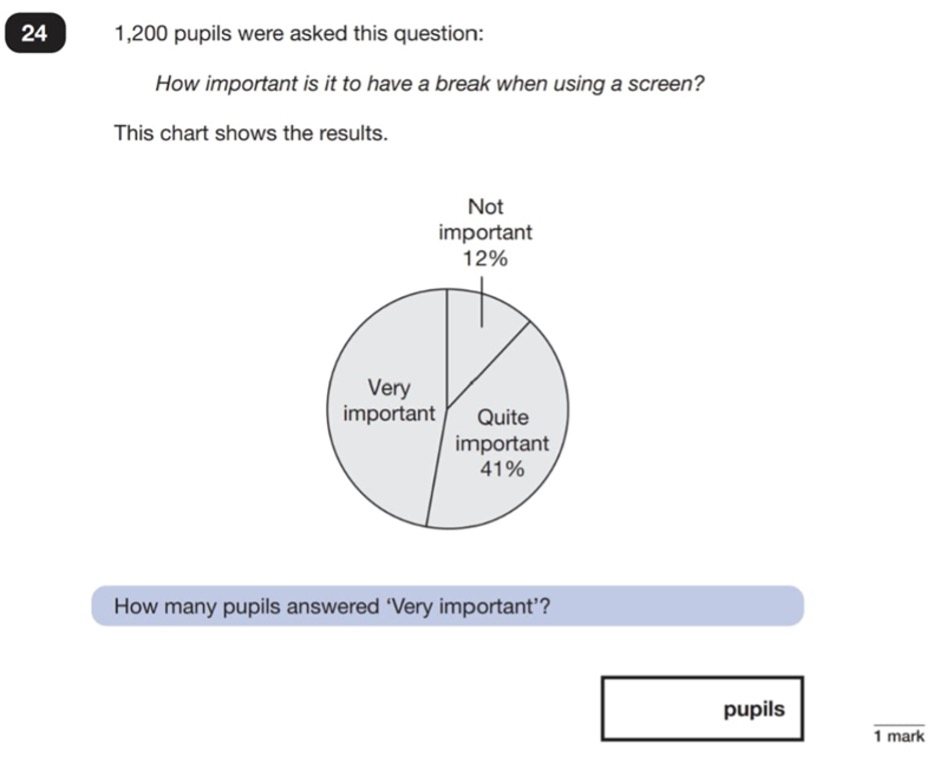
Paper 2, qu.24 (2023)
Previously, SATs maths questions have involved some obscure scenarios with little relevance to the children taking the test. However, in recent years, questions follow themes which children can better relate to.
SATs maths question example 3
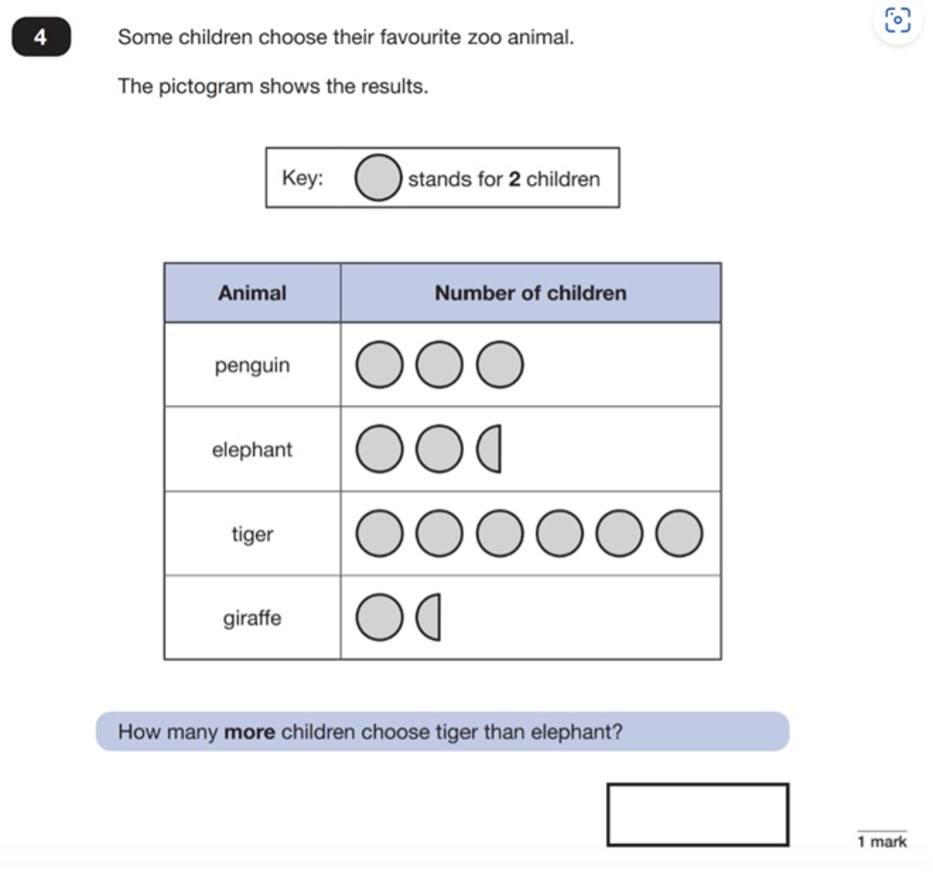
Paper 2, qu. 4 (2023)
Take the time to look at previous questions, less relatable to children, to ensure they can tackle this type of question.
SATs questions essentials
SATs questions are not only for Year 6!
SATs don’t start in Year 6, pupils benefit from exposure to SATS style questions throughout key stage 2. Exposure in other year groups means SATs-style questions aren’t new and different to anything they’ve experienced in previous years.
Other free resources: Rapid Reasoning provides you with at least 15 questions per KS2 year group (Year 3 to Year 6) per week, many of them modelled on the structure and type that children will encounter in SATs
Tricky SATs questions
Some Year 6 maths questions catch children out or they don’t read them correctly. If learners have plenty of opportunities to practise, they’ll know what to look out for and are less likely to trip up in the actual SATS.
Achieving a high SATs score
The two most content-heavy content domains in the year 6 SATS papers are:
- Calculations; and
- Fractions, Decimals and Percentages (FDP).
Generally, 51% is a pass. Historically, these two domains make up 58% of the total score. Children must be secure in these 2 areas to score highly.
Of the three papers, arithmetic is considered the easiest. It requires simple calculations. If children can achieve a score of at least 30 out of 40 in the arithmetic paper, they only need a further 26 points across the next two papers to achieve the expected standard.
Effective SATs strategies
Children need to know the best techniques to score well in their maths SATS.
Working through practice papers and past SATs test papers is a useful tool but learners need a bank of strategies they can rely on. Here are some SATs strategy examples:
- Read carefully: Encourage pupils to read the question carefully and make sure they fully understand it before attempting to solve it.
- Underline key information: Focus on the key terms in word problems. Prompt children to underline the information that they need For example, ‘altogether’ and ‘how many are left’.
- Show workings: Teach children the importance of showing workings to gain as many marks as possible, even if the final answer is incorrect.
- Time management: Make sure children are aware of how long each test is and the time they should spend on each question. Encourage them to leave a question if they are stuck and come back to it later.
Improving mental maths skills for SATS
Although mental maths is no longer assessed as part of the maths SATS, strong mental maths skills are still important.
Times tables fluency is important in many areas of the maths curriculum. Other essential mental maths skills include:
- Estimation
- Speed
- Accuracy
Learners should practise daily. Some fun strategies include:
- Flashcards
- Online maths games
- In-person maths games
- Worksheets
Mark schemes for SATs questions
Understanding how marks are awarded in the KS2 maths SATs is useful for both teachers and children.
In the arithmetic paper, marks are usually awarded for the correct answer, not for showing the correct working out.
However, there are some long division and long multiplication questions children can pick up two marks for on this paper. If learners show the correct calculation, they can still gain a point if the answer is incorrect.
Papers 2 and 3 have a combination of 1, 2 and 3 mark questions. Children can usually pick up a mark for the correct calculation, even with an incorrect answer.
Content domain coverage of the SATs questions
Be aware of the content domain coverage table at the start of the mark scheme. This table lists which year group and which objectives each question focuses on.
This is helpful to ensure appropriate learning time and curriculum coverage to some of the key areas, such as the four operations and fractions.
Arithmetic paper SATs questions
Recently, the arithmetic papers use a very similar structure. Calculation and Fractions, Decimals and Percentages are the focus of a high proportion of the paper.

Questions in this paper are straightforward and check for fluency. Their structure is relatively similar each year with the answer box at the start or end of the question. Expose children to both types.

Paper 1, Question 2 (2023)
It is also common to see similar questions progressing in difficulty throughout the paper.
For example:

Children also need to prepare for questions presented in multiple ways.
For example, children who haven’t experienced a question presented the following way may not recognise it as a question they could easily solve as a fraction of an amount rather than multiplying the fraction.
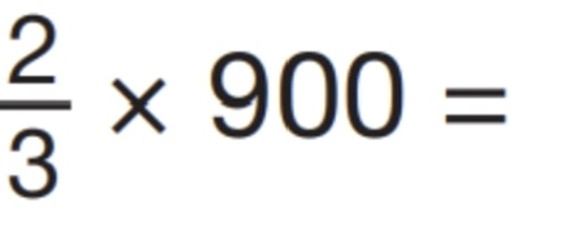
Strong arithmetic skills help learners develop speed, fluency and automaticity in the arithmetic paper.
There are a number of things teachers can do, to help children develop these skills:
- Regular practice: Set aside a dedicated time each day to focus on these basic skills. Also regular exposure to practice tests
- Begin with basic facts: Ensure children are secure in the basic facts, such as addition, subtraction and times tables facts. Games are great for helping children learn these basic facts.
- Mental maths strategies: Teach children mental maths strategies to help develop speed and fluency.
- Practise with timed tasks: Time children on short arithmetic tasks and challenge them to improve their times.
- Online resources: Online games are a great way to motivate children to practise skills, such as times tables facts.
- Simulate test conditions: Exposure to test style conditions in advance of sitting the actual SATS helps familiarise the children and reduce anxiety for the actual test.
Reasoning SATs questions
Reasoning papers contain a wider variety of questions than the arithmetic paper. There are a mix of question types, including:
- Single-step
- Multi-step
- Explanation
- Sequencing
- Ordering
These one, two and three mark questions and assess the children’s understanding more deeply than the arithmetic paper.
High levels of fluency are beneficial for the reasoning paper, with some questions designed to highlight students who have higher levels of fluency.
For example, children with high levels of fluency could quickly spot that they could solve this question without any calculations.

Paper 3, Qu. 13 (2023)
Generally, reasoning 2 and 3 increase in difficulty with more Year 6 content appearing later in the paper. There can be a few surprises thrown in early on but generally, the first half of each paper is easier.
Children are introduced to multi-step word problems later in the paper. These are the longer two mark and occasional three mark questions.
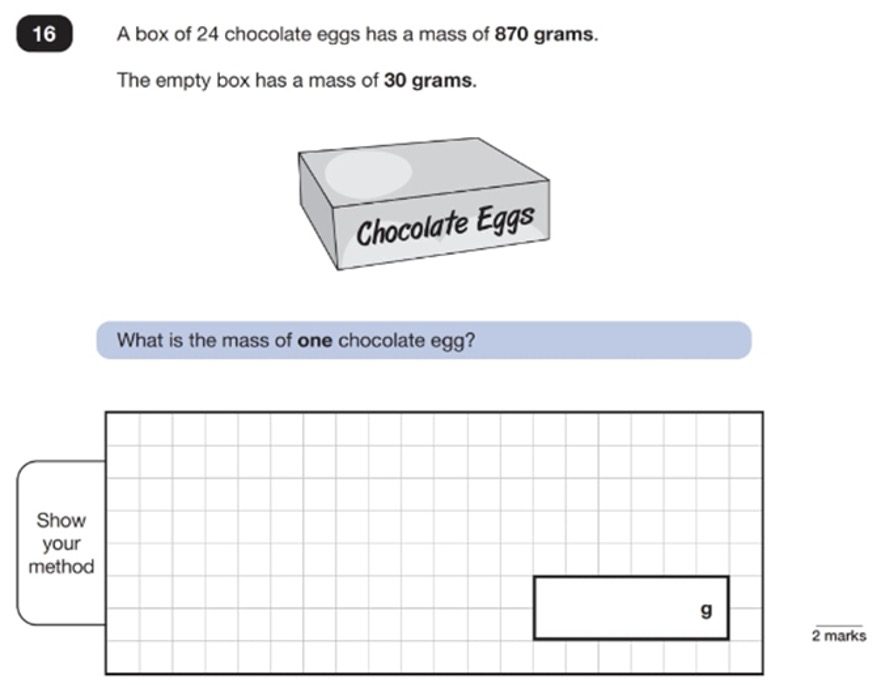
Paper 3, Qu.16 (2023)
Children also need to be aware that there can be questions which take longer to complete. These higher cognitive demand questions can hold children up with the rest of the paper.
Train learners to be aware of these and encourage them to move on to the rest of the paper.
Developing skills for SATS reasoning questions
The reasoning papers cover a broader range of topics than the arithmetic paper. For pupils to successfully complete the reasoning papers, they need to have a solid understanding of the key concepts.
While the weighting still leans towards Calculations and Fractions, Decimals and Percentages, children need to be confident in other maths curriculum areas to score well.
Skills pupils need to be successful in the reasoning papers include:
- Problem solving: The ability to understand and analyse a problem and apply mathematical concepts to real life situations.
- Reasoning: Making logical connections between different pieces of information.
- Mathematical operations: Confident in the four operations and be able to apply this in various contexts.
- Mathematical vocabulary: Knowledge of key mathematical terms used in the papers.
- Time management: Understanding when to attempt a question and when it would be better to move on.
SATs questions by maths topic and content domain
When preparing for the SATs tests, it’s helpful to know the top Year 6 maths revision topics to prioritise. The papers generally follow a similar format each year, with certain areas having a much higher weighting than others.
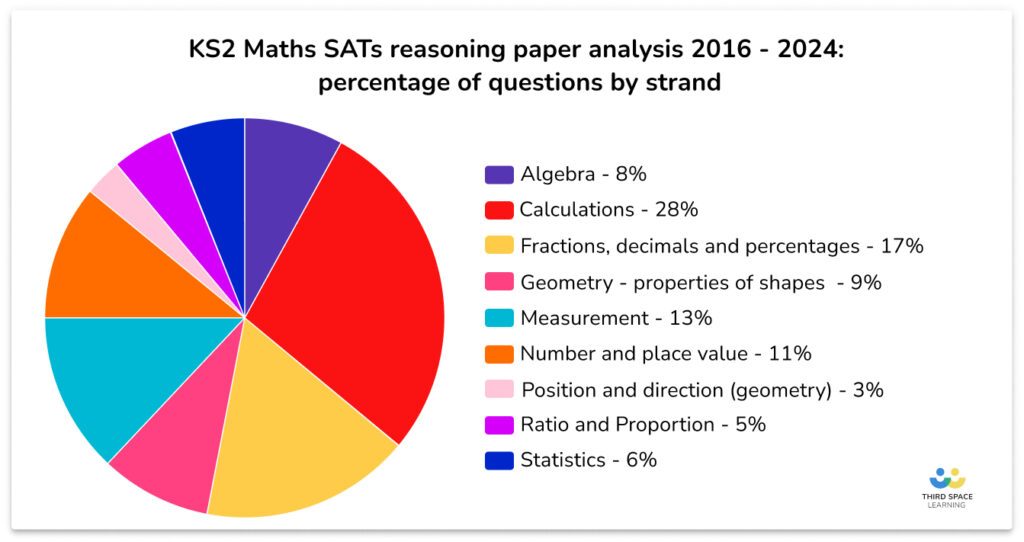
For a more in depth analysis of the SATS papers look at this article on the top 20 Year 6 maths revision topics.
Below we have included 29 exemplar SATs arithmetic and SATs reasoning questions – with answers of course – arranged by topic. As in the real life SATs we’ve roughly weighted the number of questions per topic.
Don’t miss the links at the end of this article for lots more free SATs questions, SATs revision resources and SATs intervention support.
Calculations SATs questions
The four operations are guaranteed to come up throughout all three papers. The highest percentage of the SATs exam is focused on this domain. Therefore, it is important children are secure and confident in all four written methods and applying this knowledge to a range of one-step and multi-step word problems.
Calculations SATs arithmetic questions
SATs question 1:
3,362,879 + 36,279 = ?
Answer:
3,599,158 (1 mark)
Working:
3,362,879 + 36,279 = 3,599,158
SATs question 2:
3,978 ÷ 26 = ?
Answer:
153 (1 mark)
Working:
3,978 ÷ 26 = 153
Calculations SATs reasoning questions
SATs question 3:
A house sold for £485,999. 5 years later, it sold for £123,899 more. How much did it sell for 5 years later?
Answer:
£609,898 (1 mark)
Working:
£485,999 + £123,899 = £609,898
SATs question 4:
There were 9,725 passengers on a cruise ship. At the next port, a further 487 passengers got on, but 276 passengers got off. How many are on the cruise ship now?
Answer:
9,936 (2 marks)
Working:
9,725 + 487 = 10,212
10,212 – 276 = 9,936
SATs question 5:
Circle the two numbers which have a difference of 326: 423, 716, 832, 749, 581
Answer:
423 and 749 (1 mark)
Working:
423, 716, 832, 749, 581
SATs question 6:
Mr. Smith spent £28,749 on a new car. He then spent £7,389 on a caravan. He now has £6,752 left in his bank account. How much did he have to start with?
Answer:
£42,890 (2 marks)
Working:
£28,749 + £7,389 + £6,752 = £42,890
More calculations questions: Year 6 addition and subtraction questions for SATs
Fractions, decimals, and percentages SATs questions
Fractions, decimals, and percentages are an area which children need a secure understanding. Usually, there are a large number of questions in the KS2 SATs from this content domain. If children are secure in the four operations and fractions, decimals, and percentages, it may be possible to gain enough marks to reach the expected standard — even if other areas are weak.
Fractions, decimals, and percentages SATs arithmetic questions
SATs question 7:
37.23 – 17.876 = ?
Answer:
19.354 (1 mark)
Working:
37.23 – 17.876 = 19.354
SATs question 8:
\[ \frac{3}{7} \] of 546 = ?
Answer:
234 (1 mark)
Working:
\[ \frac{1}{7} \] of 546 = 78
\[ \frac{3}{7} \] of 546 = 234
Fractions, decimals, and percentages SATs reasoning questions
SATs question 9:
A factory makes 11,250 biscuits per hour. \[ \frac{4}{9} \] of the biscuits are chocolate. How many of the biscuits made each hour are not chocolate?
Answer:
6,250 biscuits (2 marks)
Working:
\[ \frac{5}{9} \] of 11,250 are not chocolate
\[ \frac{1}{9} \] of 11,250 = 1,250
\[ \frac{5}{9} \] of 11,250 = 6,250
SATs question 10:
Chloe goes shopping and buys a pair of jeans for £48.35, a phone for £276.89, and a bag for £35.65. She now has £76.84 left. How much money did she have at the start of her shopping trip?
Answer:
£437.73 (2 marks)
Working:
£48.35 + £276.89 + £35.65 + £76.84 = £437.73
SATs question 11:
Max bought a hoodie in the sale. The original price was £42.60, but it was in the sale, with 25% off. How much did he pay for the hoodie?
Answer:
£31.95 (2 marks)
Working:
25% of £42.60 = £10.65
£42.60 – £10.65 = £31.95
SATs question 12:
Ahmed has a bag of sweets. He works out that \[ \frac{1}{8} \] are green, \[ \frac{3}{8} \] are red, \[ \frac{2}{8} \] are yellow, and \[ \frac{2}{8} \] are orange. He has 21 red sweets. How many are in the bag altogether?
Answer:
56 sweets (2 marks)
Working:
\[ \frac{3}{8} \] = 21, so \[ \frac{1}{8} \] = 7
7 x 8 = 56
More questions: Year fractions questions for SATs (to come)
Number and place value SATs questions
Children need a secure understanding of place value for the SATs exam. Place value questions may appear less frequently than some other domains, but it is the foundation for understanding many other mathematical concepts in the KS2 SATs exams. On average, number and place value make up 12% of questions across the 3 papers.
Number and place value SATs arithmetic questions
SATs question 13:
What is the value of the digit 7 in each of the numbers: 27.9, 3.57, 82.71, 76.3
Answer:
7, 0.07, 0.7, 70 (1 mark)
Working:
27.9 = 7
3.57 = 0.07 or \[ \frac{7}{100} \]
82.71 = 0.7 or \[ \frac{7}{10} \]
76.3 = 70
SATs question 14:
653 ÷ 100 = ?
Answer:
6.53 (1 mark)
Working:
653 ÷ 100 = 6.53
Number and place value SATs reasoning questions
SATs question 15:
How many times greater is the digit 6 in the number 4,365,281 than the digit 6 in 2,357,368?
Answer:
1000 times bigger (1 mark)
Working:
4,365,281 = 60,000
2,357,368 = 60
SATs question 16:
What is the number exactly 2 less than 14 million?
Answer:
13,999,998 (1 mark)
More questions: Year 6 Place Value Questions for SATs
Geometry SATs questions – properties of shape
Geometry SATs questions vary year to year. Some years include more geometry questions than others. It is important that pupils have a secure understanding of the geometry strands to help them in the reasoning papers.
Geometry SATs reasoning questions
SATs question 17:
Match the name of the 3D shape to the name of one of the shapes on its surface:
- Square-based pyramid – Circle
- Hexagonal prism – Triangle
- Cylinder – Rectangle
Answer:
Square-based pyramid – Triangle, Hexagonal prism – Rectangle, Cylinder – Circle (1 mark)
SATs question 18:
An isosceles triangle is labelled with the angles ‘A’, ‘B’, and ‘C’. Angle A measures 54°. What 2 possible sizes could angles B and C measure?
Answer:
54° and 72° or 63° and 63° (2 marks)
Working:
Sum of angles in a triangle = 180°
54° + 54° + 72° = 180°
54° + 63° + 63° = 180°
Geometry measure SATs questions
Measure SATs questions only appear in the two reasoning papers and make up an average of 13% of the total marks.
Measure SATs reasoning questions
SATs question 19:
The distance between two cities is 426 km. What is the distance in meters?
Answer:
426,000 m (1 mark)
Working:
426 km = 426,000 m
SATs question 20:
Year 6 are going on a school trip to a theme park. If the journey takes 1 hour and 25 minutes and they want to arrive by 9:45 am, what time do they need to set off?
Answer:
8:20 am (1 mark)
Working:
9:45 am – 1 hour 25 minutes = 8:20 am
SATs question 21:
A primary school is looking to put a fence around the school vegetable patch. The vegetable patch is a rectangular shape. The length of one side is 427 cm and the length of the shorter side is 346 cm. How many meters of fencing will they need?
Answer:
15.46 m (2 marks)
Working:
427 + 346 = 773
773 x 2 = 1,546 cm = 15.46 m
Position and direction SATs questions
Position and direction accounts for the smallest proportion of the year 6 SATs, with an average of only 3% of questions taken from this content domain in the 2023 SATs papers.
Position and direction SATs reasoning questions
SATs question 22:
Sam is hunting for treasure using a coordinates grid. The treasure is hidden at (2, 4). Sam is standing at (7, 6). Describe how he can get to the treasure.
Answer:
Move left 5 and down 2 (1 mark)
SATs question 23:
Mason is facing East. He turns 270° clockwise. What direction is he facing now?
Answer:
North (1 mark)
Ratio and proportion SATs questions
Ratio and proportion make up a small percentage of the reasoning papers and are often an area children can find quite difficult. Before spending a lot of revision time on ratio and proportion, it can be a good idea to ensure pupils are confident in using the four operations and fractions, decimals, and percentages. These curriculum areas are worth more marks in the SATs papers.
Ratio and proportion SATs reasoning questions
SATs question 24:
This is a recipe for making 25 chocolate chip cookies:
- 125g butter
- 150g sugar
- 200g plain flour
- 1 large egg
- ½ teaspoon bicarbonate of soda
How many grams of sugar are needed to make 15 cookies?
Answer:
90g sugar (2 marks)
Working:
5 cookies = 150 ÷ 5 = 30g
15 cookies = 30 x 3 = 90g
SATs question 25:
Year 6 have been participating in a netball league. The team played 15 games over the season and the coach worked out that for every 2 wins they lost 1 game. How many more games did they win than lose over the season?
Answer:
5 games (1 mark)
Working:
15 games in total – 5 lots of 2 wins and 1 loss. In total, they won 10 games and lost 5, therefore won 5 more games than they lost.
More questions: Year 6 ratio questions for SATs
Algebra SATs questions
Algebra is introduced to pupils in Year 6. For those close to the age-related threshold, algebra can be tricky and require extra revision. But with algebra making up a total of 9% of questions in the 2023 reasoning papers, revision for these pupils may be better spent on more frequent occurring strands.
Algebra SATs reasoning questions
SATs question 26:
I am thinking of a number. I multiply the number by 21 and add 3. The answer is 84. What was my number?
Answer:
4 (1 mark)
Working:
X x 21 + 3 = 87
21X = 84
X = 4
SATs question 27:
Mrs Brown is roasting a chicken in the oven for lunch. She knows it takes 20 minutes to roast each kilogram of chicken. If Mrs Brown has a chicken weighing 2.5kg, how long does she have to roast the chicken for?
Answer:
50 minutes (1 mark)
Working:
2.5 x 20 minutes = 50
More questions: Year 6 algebra questions
Statistics SATs questions
Statistics are another topic that appears less frequently in the SATs exams. On average, the statistics questions account for approximately 4% of questions across the 2 reasoning papers.
Statistics SATs reasoning questions
SATs question 28:
6 children were comparing their test scores. They wanted to work out the average score the 6 of them had achieved. The scores were: 31, 24, 38, 27, 35, and 31. What was the average score?
Answer:
30 (1 mark)
Working:
31 + 24 + 38 + 27 + 35 + 25 = 180
180 ÷ 6 = 30
SATs question 29:
In a survey of favourite foods, 30% of children chose burgers, 25% chose pizza, 35% chose ice cream, and 10% chose cake. If 40 children chose pizza, how many chose burgers?
Answer:
48 children (1 mark)
Working:
40 children = 25%
160 children in total
10% = 16 children
30% = 16 x 3 = 48
More SATs exam questions and papers
- 75 KS2 SATs questions by topic
- Best Year 6 SATs practice papers from all sources
- 6 KS2 maths SATs practice papers free downloads from Third Space Learning
- Past SATs papers – links to all previous government papers including the 2016 sample papers
- Year 6 maths test
GET THE ANALYSIS ON PREVIOUS SATS
SATs have been running in their current incarnation for 7 years; there were no government standardised assessments in 2020 and 2021 as a result of the Covid-19 pandemic. Get all the analysis and results from previous national assessments below.
And find out which are the top 20 year 6 maths revision topics to focus on this year.
– SATs papers 2025
– SATs results 2025
– SATs papers 2024
– SATs results 2024
– SATs papers 2023
– SATs results 2023
– SATs papers 2022
– SATs results 2022
– SATs papers 2019
– SATs results 2019
– SATs papers 2018
– SATs results 2018
– SATs papers 2017
– SATs results 2017
– SATs results 2016
FAQs
The year 6 SATS include assessments in English and mathematics. The English covers reading, grammar, punctuation and spelling (SPAG) and maths (arithmetic and reasoning).
The score required to pass the maths SATS exam has ranged from 56 marks to 61 marks over the past 5 years (a percentage range of 51% to 55%). There are no official guidelines for greater depth but children need a raw score of around 94 (or a percentage of 85-88%).
There is no pass or fail in SATs. Children who don’t achieve the mark required to be considered ‘at the expected standard’, will be considered as ‘working towards’.
SATs are more important for schools than they are for children. Some secondary schools may consider SATS when deciding how to group the children, but many will test at the start of year 7.
For schools, SATs provide a measure of attainment and progress for the pupils and a way of comparing schools, based on results. Whilst SATs can provide useful information, it’s important not to overemphasise their importance.
DO YOU HAVE STUDENTS WHO NEED MORE SUPPORT IN MATHS?
Skye – our AI maths tutor built by teachers – gives students personalised one-to-one lessons that address learning gaps and build confidence.
Since 2013 we’ve taught over 2 million hours of maths lessons to more than 170,000 students to help them become fluent, able mathematicians.
Explore our AI maths tutoring or find out about year 6 sats for your school.


